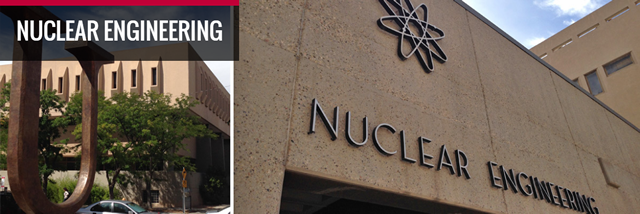
Nuclear Engineering ETDs
Publication Date
2-9-2010
Abstract
Compton imaging is a gamma ray imaging technique that has possible applications in the nuclear and medical industries. Compton imaging can localize the origin of a scattered gamma ray, to a cone, using a minimum of two position and energy measurements. The projection of many cones will overlap at a common point leading to the actual source position. A prototype Compton imager (PCI) has been constructed at Los Alamos National Laboratory (LANL) that uses a combination of silicon and CsI detectors. A model of the PCI has been simulated and validated, showing good agreement with measured data. The angular resolution of the PCI was measured to be 0.156 radians FWHM. Additionally, a method for determining the source-to-detector distance in the near field has been developed and demonstrated. The algorithm presented has the ability to determine the source-to-detector distance in the near field within 1 cm of the actual distance. While traditional back-projection algorithms are adequate for imaging of single point-like sources they are not sufficient to resolve extended shapes or closely spaced multiple point-like sources. Iterative algorithms may provide the necessary deconvolution. Maximum Likelihood Expectation Maximization (MLEM) is an iterative statistical algorithm that reconstructs the most probable source distribution for a given data set. Normally, MLEM makes computations for each possible combination of energy and position, however this becomes a prohibitively large problem for both analysis time and hardware memory limits, depending on the data set. List Mode MLEM attempts to circumvent the calculation of every combination of energy and position and relies on the probability of the given data being observed. An algorithm using List-Mode MLEM is of interest because the number of calculations required for reconstruction is substantially less than that of other iterative processes but will enable imaging of both point and extended sources. This type of algorithm has been written and successfully applied to both experimental data from the PCI and simulations of the PCI. The algorithm will be demonstrated to improve detection of both point-like and extended sources.
Sponsors
Department of Energy
Document Type
Thesis
Language
English
Degree Name
Nuclear Engineering
Level of Degree
Masters
Department Name
Nuclear Engineering
First Committee Member (Chair)
Hecht, Adam
Second Committee Member
Sullivan, John
Recommended Citation
Tornga, Shawn. "A prototype Compton imager : simulations, measurements and algorithm development." (2010). https://digitalrepository.unm.edu/ne_etds/48


